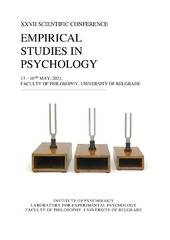Приказ основних података о документу
Timss 2019 in Serbia: through the lens of sdg 4
| dc.creator | Đerić, Ivana | |
| dc.creator | Ševa, Nada | |
| dc.creator | Jošić, Smiljana | |
| dc.date.accessioned | 2021-06-10T12:22:48Z | |
| dc.date.available | 2021-06-10T12:22:48Z | |
| dc.date.issued | 2021 | |
| dc.identifier.isbn | 978-86-6427-166-0 | |
| dc.identifier.uri | http://ipir.ipisr.org.rs/handle/123456789/482 | |
| dc.description.abstract | UNESCO's 2030 Agenda for sustainable development in the field of education aims at "ensuring inclusive and equitable quality education and promote lifelong learning opportunities for all” by 2030. The paper discusses main findings of the TIMSS 2019 study in Serbia through the lens of the UNESCO's Sustainable Development Goal 4 (SDG 4), more specifically targets 4.2., 4.5 and 4.c. The SDG 4 target 4.2 defines "equal access to quality early childhood development, care and pre-primary education so that they are ready for primary education". Results from TIMSS 2019 show that the coverage of children attending a preschool program "3 years or more" has increased by 9% compared to the previous 2015 TIMSS cycle. In addition, the positive relationship between years of attending the preschool education and higher average achievement in mathematics and science of 4th graders in Serbia was demonstrated. TIMSS 2019 data for Serbia also provide some insights on home learning resources relevant for SDG 4 target 4.5., aimed at establishing equal access to all levels of education for the children from vulnerable groups as well as to diminish gender disparities. A difference of 187 points on average in students' achievement in mathematics and science was observed between those who have many resources (MAT: 574; SCI: 576) and those who do not have enough of them (MAT: 387; SCI: 389). In Serbia, a statistically significantly higher number of 4th grade students with many home learning resources reach low international benchmark of 400 points (99%), compared to peers who have less home learning resources (44%).The SDG 4.c target refers to the increase the percentage of teachers who will dedicate a larger number of hours of in-service training in different areas of mathematics and science. When it comes Serbia, professional development (PD) in the fields of mathematics and science is at relatively low level in comparison to international average. Number of teachers of the 4th grade students in Serbia who spent less than 6 hours or none in math and science related PD is high (38% for mathematics and 48% for science). The future PD needs expressed by teachers are in line with the current trends regarding the use of ICT in the field of education, especially in the context of COVID 19 pandemic. The data from TIMSS 2019 allow for policy makers to develop evidence-based strategies in order to accomplish presented SDG 4 targets, | sr |
| dc.language.iso | en | sr |
| dc.publisher | Beograd : Laboratorija za eksperimentalnu psihologiju | sr |
| dc.publisher | Beograd : Filozofski fakultet | sr |
| dc.rights | openAccess | sr |
| dc.rights.uri | https://creativecommons.org/licenses/by/4.0/ | |
| dc.source | Empirical studies in psychology | sr |
| dc.subject | TIMSS 2019 | sr |
| dc.subject | sustainable development goal | sr |
| dc.subject | Serbia | sr |
| dc.subject | quality of education | sr |
| dc.subject | evidence-based policies | sr |
| dc.title | Timss 2019 in Serbia: through the lens of sdg 4 | sr |
| dc.type | conferenceObject | sr |
| dc.rights.license | BY | sr |
| dc.citation.epage | 17 | |
| dc.citation.spage | 17 | |
| dc.description.other | Knjiga rezimea / XXVII naučni skup Empirijska istraživanja u psihologiji | sr |
| dc.identifier.fulltext | http://ipir.ipisr.org.rs/bitstream/id/1344/Timss_2019_in_Serbia_2021.pdf | |
| dc.identifier.rcub | https://hdl.handle.net/21.15107/rcub_ipir_482 | |
| dc.type.version | publishedVersion | sr |

